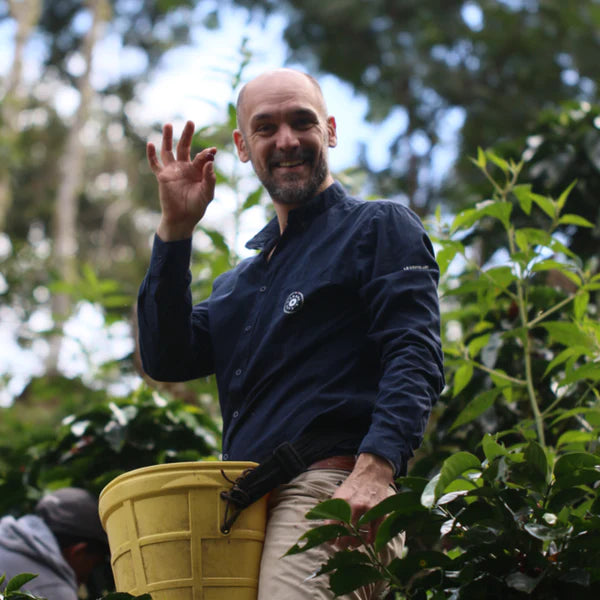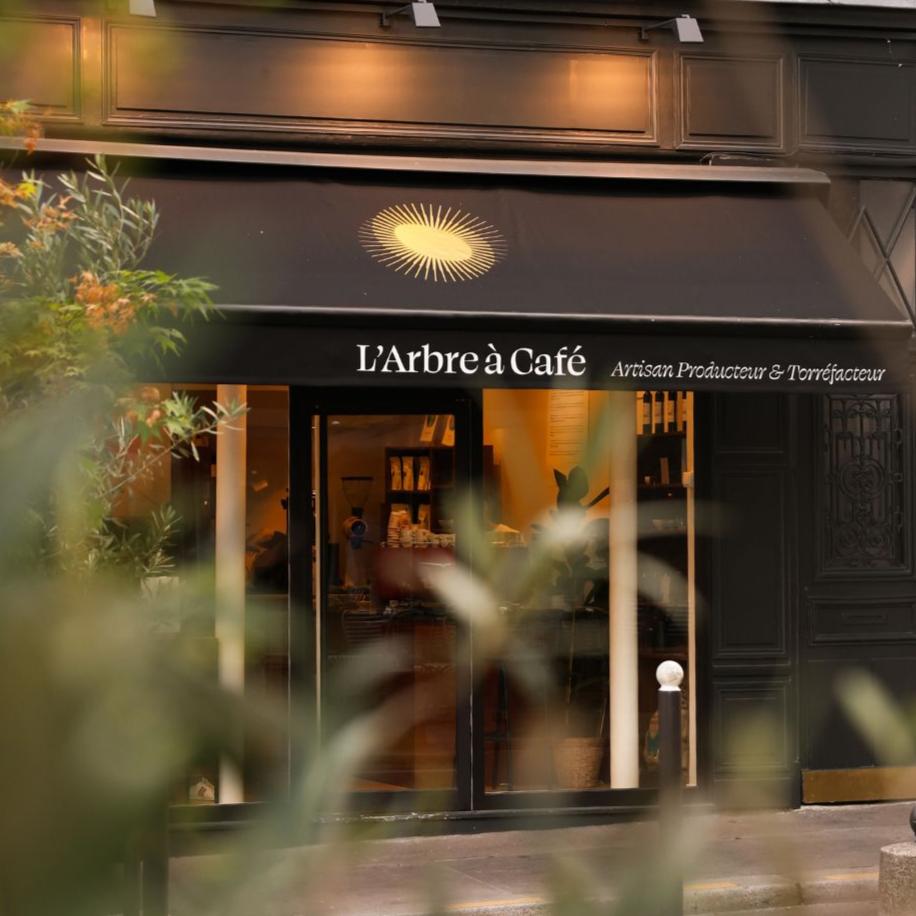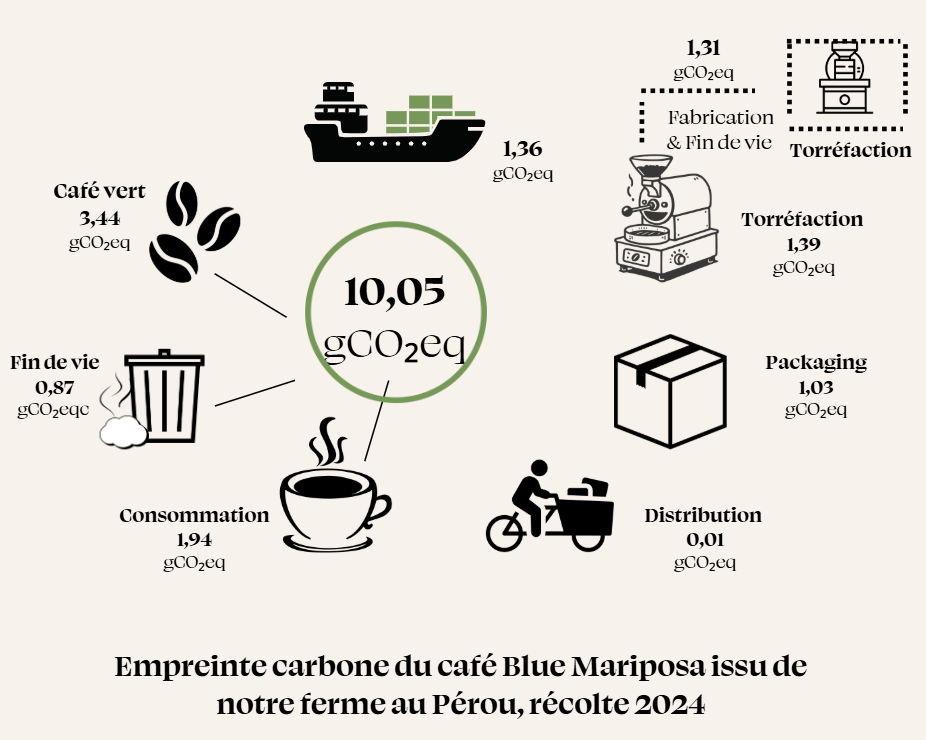There are two issues that threaten the coffee world in a lasting and dramatic way, like many others, if not all: climate change and the level of coffee prices.
When talking about global warming, we often consider only CO2 emissions, sometimes the rise in water levels, and since Irma, the increase in the violence of climatic phenomena. When talking about the conditions of farmers, we focus on pig farmers and milk producers in our country, and little on others, and even less elsewhere.
However, climate change has frightening effects on all sectors, and on the first of them, our food, our plate, and our cup.
And the change is not tomorrow as we would like to believe, but today.
In this dark and universal context, we can only rejoice at the success of coffee, a natural and pure product if ever there was one. More and more people around the world like and drink coffee! More than 2 billion cups are served every day, and entire continents, which ignored it yesterday, are discovering and adopting it today. This is the case of Asia and countries such as Korea, the Philippines or Vietnam whose consumption is growing by 8% per year according to the ICO. World coffee consumption has doubled in 20 years. And we know that this trend will last, one day all the countries in the world will have reached the consumption of Italy, 6.5kg/year or even Norway 12kg/year.
All of them? Really?
Well, no, because they will not have the time or the opportunity. Climate change and price volatility since the liberalization of the market in the 1980s, mean that coffee is on the way to extinction.
According to the International Coffee Organization, nearly 60% of the world's coffee production area will be directly threatened by 2050, and all of it by 2080, according to some studies, including the prestigious journal Nature Plants. Countries like Ethiopia, the cradle and Noah's Ark of Arabica, are threatened by more than 60%. In short, coffee is becoming rare, and our daily rituals around a coffee are threatened.
And for proof, for several years, while world consumption is surely growing, +1.5% per year, production has been stagnating and even declining.It is estimated that there is a gap of more than 3 million bags (60kg) between the needs and the production: 180 thousand tons, which is half of the French consumption. In Brazil, the first world producer, the production of 2017 is announced in decline of 12%.
So what's going on?
Like all plants, the coffee tree is extremely sensitive to its environment and grows in biotopes with mild temperatures (18-25°C), high but not too high humidity and reasonable water stress.
However, for more than a decade, global warming has made low-lying areas unsuitable, and increased rainfall and torrential rains have favored landslides, soil leaching, and above all pandemics. Some orchards in Latin and Central America have been ravaged by Rust, a leaf fungus close to our Iodium. 60% of the orchards in Honduras, 60% in Guatemala, as much in Colombia and the list would be long, and this, in a few years, reminding us of the ravages of phylloxera which had annihilated more than 90% of the French vineyard in a few years and not in decades. In Guatemala, it is estimated that Rust caused the loss of 100,000 farms in two years...
In Africa, it is another fungus that attacks the fruits and not the leaves, but with the same dramatic effects. And all the observers and professionals are already announcing that coffee growing, which is extremely fragile, will not be able to restart if it is affected as it has been in Latin America for example. Imagine for a moment if we told you that tomorrow, 60% of the Beauce would soon be unfit for cereal growing? This could be the case.
Indeed, after such a pandemic, the producers are ruined, and have to replant and wait 3 years before the first harvest. What do they do during this time? They leave and abandon their plantations, like in Peru or Guatemala.
We can see a rural decline and exponential rural exodus in the producing countries. The little known reality of coffee is that its 70 million producers are small family producers, often living from mixed farming.
At the same time, coffee is perhaps the only foodstuff whose prices are at the same level as those of 30 years ago... even though the producing countries have developed and the standard of living has increased and life has become more expensive.
The producers of the whole world are therefore on the verge of ruin. The industrialists, especially the 5 who hold 80% of the world market, are on the alert!
So what to do? What are the solutions?
They are of at least two types.
- The path of progress, that of ever more and of the policy that we now know to be vicious: ever more technology, technicality, expenditure, investment and therefore debts, impoverishment of people and especially of the soil: modified or GMO varieties and therefore paying and sterile, highly technicalized cultivation techniques (irrigation, etc.), chemical inputs, etc., that is to say, insane production costs. In Brazil, it is estimated that in two decades they have gone from 20 to more than 30% of costs. However, these costs are now, for small and medium producers, higher than the price of coffee. How do we know this? Because it is already the case! It is so much the case that even the industrialists who want to guarantee their supplies, and even more their quality, buy already above the market.
- The way to progress, but the real one, the one that takes into account the real fundamental needs of the plant and the farmers, is the one of the soil. All studies show that the best way to fight against global warming is to improve the quality of the soil and especially the humus. The FAO (not really pro hippie and bobo) has made it its priority in 2015, agroforestry, biodiversity, cultivation methods without inputs but combining resources. are spreading and show how they can in a short time, in tropical countries, regenerate the soil.
- These two paths will sometimes have points in common, such as the migration of production areas: to higher altitudes, to areas with colder climates today, leaving millions of producers and millions of hectares of coffee-cutting on the sidelines. But as is often the case, the solution is a synthesis, and in order to innovate in the field of agriculture, we need technical skills, but technical skills that are inspired by nature and that are not predatory, a symbiotic solution.
You will have understood that is why L'Arbre à Café is invested since 2009 in sustainable agriculture as Biodynamics, which is now the method that recreates the most quickly and effectively humus without cost of purchase. L'Arbre à Café has also adopted Direct Trade from the beginning in order to buy directly from the producer at non-market prices so that they live from their work, invest in quality, and work.
And you know what?
You and I can only rejoice!
If so, because according to the latest Ifop survey of September 2017, more than 70% of French people are ready to change their food consumption to compensate for climate change, better 87% are ready to reorient their consumption towards products more responsible humanly and environmentally. This is logical since 93% think that pesticides and other chemical inputs have an impact on their health, and as many undoubtedly know that without producers and production areas, we will no longer have anything to eat.
The other source of wonder is that the producers that we accompany and whose products you appreciate so much are today all among the best producers on the planet. For example, our producers in Brazil, Panama, India and Peru were all honored in 2017 and recognized as producing the best coffees in their countries. Until recently, they were thought to be original. But now they've become role models...




















